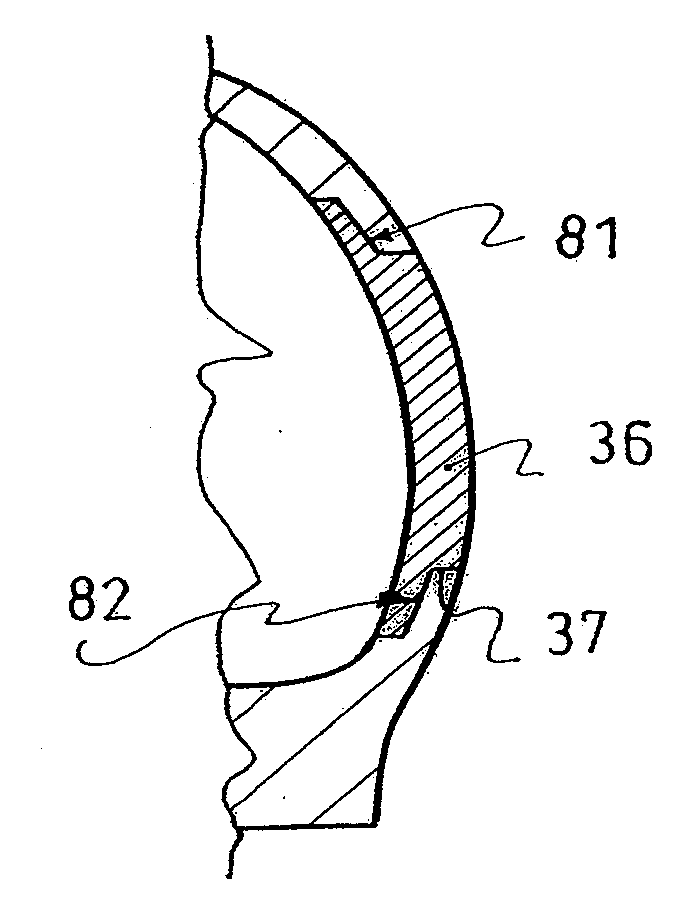Footwear having a rigid shell
a technology of rigid shells and boots, applied in the field of boots, can solve the problems of loss of precision in steering the ski, affecting the perception of biases of seasoned skiers, and affecting the performance of the ski
- Summary
- Abstract
- Description
- Claims
- Application Information
AI Technical Summary
Benefits of technology
Problems solved by technology
Method used
Image
Examples
Embodiment Construction
[0031]FIGS. 1 and 2 illustrate an article of footwear 10. More particularly, in the example shown, the article of footwear is a ski boot. Another type of footwear could be shown, such as a snowboard boot, a trail-running shoe provided with a shell, or a shoe or boot having a portion of the upper including a rigid element (such as a stiffener, a collar, etc). The boot conventionally includes a shell 11 and a comfort liner 12 provided to envelop a user's foot. The shell includes a shell base 13 surmounted by a collar 14. The collar is connected to the shell base via an articulation 15 located approximately in the area of the malleolus. On top of the shell base and at the forefront of the collar, the shell has two flaps, which can be moved apart from one another to widen the shell's opening when the foot is inserted into the boot, and which can be moved closer together to overlap when closing the boot.
[0032] The liner 12 is of any appropriate type. It is, for example, made of foam wit...
PUM
 Login to View More
Login to View More Abstract
Description
Claims
Application Information
 Login to View More
Login to View More - R&D
- Intellectual Property
- Life Sciences
- Materials
- Tech Scout
- Unparalleled Data Quality
- Higher Quality Content
- 60% Fewer Hallucinations
Browse by: Latest US Patents, China's latest patents, Technical Efficacy Thesaurus, Application Domain, Technology Topic, Popular Technical Reports.
© 2025 PatSnap. All rights reserved.Legal|Privacy policy|Modern Slavery Act Transparency Statement|Sitemap|About US| Contact US: help@patsnap.com



